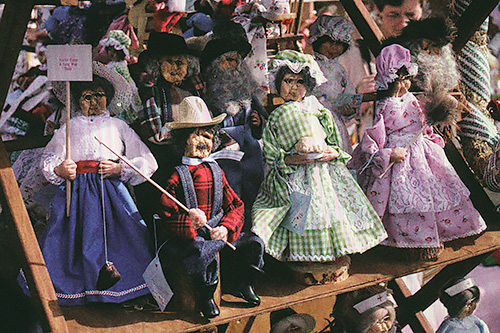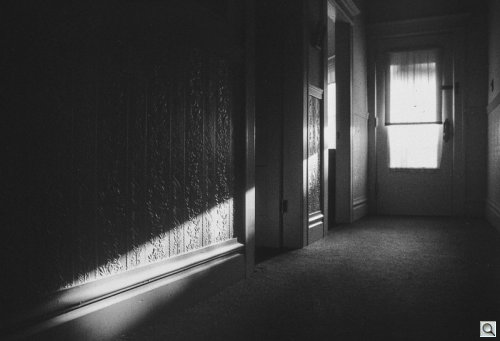Photo Corners headlinesarchivemikepasini.com
![]()
A S C R A P B O O K O F S O L U T I O N S F O R T H E P H O T O G R A P H E R
![]()
Enhancing the enjoyment of taking pictures with news that matters, features that entertain and images that delight. Published frequently.
Friday Slide Show: The Old Place




13 May 2016
When you live in a place for a long time, much of it becomes invisible to you. You don't have to look to find a door knob or measure your steps to the next room or slap the bathroom wall to find the light switch.
We lived in a Richmond district flat for 28 years and, while much of it did become invisible to us, we became very fond of watching the way the light fell into the old place.
It was a lower flat with tall ceilings. So we knew nothing of sunrises or sunsets. But when the sun was high, it would drive its rays into the windows and light up a part of the stage on which we played out our life.
"Atmosphere," we'd call it now.
AN UNUSUAL EMULSION
There are just three slides in today's show (a welcome respite from the blockbusters we've been featuring lately) but they are unusual in another aspect.
They were shot on Polaroid transparency film.
The film, introduced in 1983 and discontinued in 2003, was available in four types: Polapan for black-and-white, Polachrome for color, Polagraph for high contrast copy work and Polascope for oscilloscope imaging.
It was developed in a light-tight box, also made by Polaroid, with a small box of chemicals called a processing pack that came with each roll. Here's the drill:
Slides were mounted in hinged plastic mounts, an ingenious and easy way to mount a slide that required no training.

Striations. The scanner picked up these lines on the Polachrome.
The images in our slide show are all Polapan.
The various types all tend to be high contrast, though, with little detail in the shadows and not very black blacks. We scanned these on the OpticFilm 135 and liked the results.
We also scanned some Polachrome but there were problems.
The color scans all showed striations running in the long direction that weren't visible when viewed through a loupe.
We scanned the Polachrome slides both vertically and horizontally and were not able to avoid the striations. They seem to be a physical artifact of how the emulsion was embedded on the base.
A 100 percent detail of one scan shows what we're talking about.
The white balance of all our Polachrome scans were also very noticeably tinted magenta. That's easily fixed in post processing, of course, but we were a little surprised we couldn't eliminate it in VueScan with any of the White Balance settings.
It really wasn't a great color film. Or even an adequate one. But you could develop it yourself in just a few minutes -- and that was a very big deal. You didn't need a lab.

Polachrome. Just a crop of the full image, showing color corrections and detail.
You might think of it as having something of an art filter built-in.
POST PROCESSING
Post processing our black-and-white Polapan images in Lightroom was straight-forward:
- We started by using the Upright tool on the first two, leaving the distortion of the last image alone in favor of the crop.
- We converted the image to Black and White mode from Color. This took care of a slightly cool White Balance issue.
- We added a healthy dose of clarity to increase the apparent sharpness.
- We opened up the Shadows significantly even though Polapan doesn't have a good black.
- So we darkened the Black to bring that back and some.
- Then we tried to recover some Highlight detail. There wasn't much there but there was some.
ABOUT THE IMAGES
We'd normally just leave you with a few captions in the slide show but since there are so few images, we thought we'd elaborate on them a bit.
The Hallway
Modern home design eschews hallways in favor of open space for some reason but we can testify that they are much loved by children for running up and down.
We didn't mind them either as gallery space. There was always a spot to hang another picture.
And the wainscoting on the walls makes for lovely texture in this image.
The Kitchen
The afternoon light falling onto the washed dishes and just making it to the sink is filtered by old wine bottles. You can see a macramé piece hanging alongside the window.
We were hanging that when a brother called to tell us Grandma had died. Funny the things an image calls to mind.
You can just barely make out the checkered tablecloth in the foreground.
The Study
We built the worktable out of pine and covered the desktop with a drawing board cover. It supports a DEC Rainbow 100, which also dates from 1983, housed in a tower under our large desk with a library of 5-1/4-inch floppy disks (it did not ship with a hard drive) under the monitor.
PL/I Structured Programming is the tome behind the keyboard. 'Twas all the rage. And the copy stand props up several sheets of keyboard shortcuts for various applications. Keyboard chords were what you used before the mouse.
Beyond the monochrome monitor, famous for its option to display 132 characters, is an LA-50 dot matrix printer, famous for its adherence to ANSI escape sequences. We wrote our first program (in Assembly language) to control a printer with escape sequences.
If you look carefully, you'll notice a small round digital clock attached to the table. You had to set the clock on the Rainbow every time you booted it because it did not itself have one.
We were amused the other day to get an email from Bryan Higgins of Motet Music Publishing Co. who helped us solve a number of tricky programming issues on the Rainbow, a platform we stuck with until the Mac won us over (in other words, too long). He just had one question: "What I want to know, Mike, is whether you've gotten Photoshop CC 2015 to run on the DEC Rainbow."
We can report that we've gotten Photoshop to run on the old table if not the DEC Rainbow. That's where we keep one of our MacBook Pros.
AND SO
These three images, forgotten for years, walk you down the long hall from the front door, past the kitchen, to our study, which had been the only real bedroom in the flat.
We forget the things that concerned us then. But it was a pleasure to find these images again, which gently recalled another time without bringing up the anxieties of those days.
Ah, what sweet memories are locked away in an old photograph!
